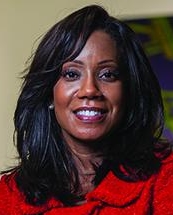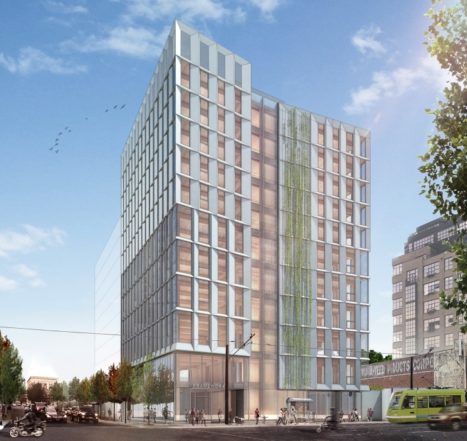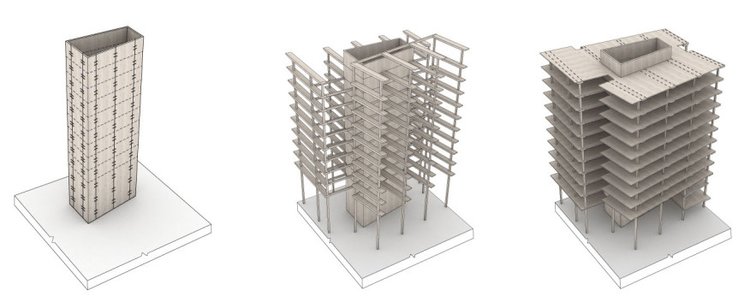Dream Big > Engineering Our World: a film for IMAX® and giant screen theaters that gives everyone a fresh perspective on the world of engineering, and the imagination we need to create a sustainable future.
Best known to the general public for its reliably bleak, quadrennial report cards on U.S. infrastructure — which now evoke Chicken Little in their consistently dire assessments of our nation’s aging roads, bridges, sewers, etc. — the 150,000-member American Society of Civil Engineers (ASCE) will strike a decidedly more upbeat tone this week, Sept. 28 – Oct. 1, at its annual convention in Portland OR, aka “America’s Greenest City”.
There, the group will seek to win next-generation hearts and minds by promoting the awe-inspiring feats that engineers have contributed to history, and by doubling down on ASCE’s Grand Challenge to develop innovative #GameChangers for solving the daunting global challenges of both today and tomorrow. And it will do so with a jaw-dropping assist from Hollywood, which is now in final production on Dream Big, a 3-D, 70-mm, giant-screen film that will hit IMAX theaters next February for National Engineers Week. Attendees in Portland will see a series of sneak-peek short films that offer a glimpse of the feature-length movie, funded via the ASCE Foundation, with a major gift from San Francisco-based Bechtel Corp.
“The giant-screen film medium is the perfect format for communicating all that is exciting and innovative about the work of engineers,” said Dream Big director Greg MacGillivray, the two-time Academy Award-nominated chair of MacGillivray Freeman Films, best known for its popular 1976 film To Fly!, which still plays at the Smithsonian’s National Air and Space Museum in Washington DC. The new IMAX effort “puts viewers right in the heart of the action, climbing to the top of the world’s tallest building, soaring over a bridge so tall it extends above the clouds, or speeding alongside students racing across Australia in a solar car engineering competition,” he explained.
“The production also gives us a fresh way to reach out to girls, a group that we know from countless research studies is less likely to pursue STEM careers
”

With next-gen recruitment as its goal, ASCE says the revamped PR campaign is designed to “transform the understanding of, and interest in engineering, science and technology, and open new opportunities, especially for children in grades K-12. The project seeks to bolster academic achievement, student engagement, and parent involvement, and is one of the largest public awareness and outreach projects on engineering ever conceived.”
Added Bechtel Principal VP Charlene Wheeless, “[It] also gives us a fresh way to reach out to girls, a group that we know from countless research studies is less likely to pursue STEM careers.”
The here and now
Aside from the future, those thousands of engineers who descend on Portland this week also will have plenty to discuss in the here and now, much of it hinged on the vital infrastructure investment that taxpayers and state and federal governments need to make sooner than later. And since sustainability now is seen as a key piece of making such public and private investments more economically viable, Portland, itself, will be on display as a case study.
Ah, the wonders of Portland — both natural and man-made — the latter being of particular interest to engineers. In 2015, Travel + Leisure magazine named it “America’s Greenest City,” but that is far from Portland only nickname. Others include “Silicon Forest”, for the outgrowth of tech startups and major subsidiaries that have clustered in Oregon, affiliated with Intel, Autodesk, Oracle, Apple, HP, IBM, Airbnb, Mozilla, SurveyMonkey, SolarWorld, and more. Not surprisingly, the city also is establishing itself as a center of the burgeoning mass-timber building movement, the result of several low-rise wood-framed buildings completed locally, and one yet to be built. Framework, a 12-story, mixed-use facility designed by Portland’s own Lever Architecture is set to break ground downtown next February.

Among existing structures and other projects, Portland also will offer visitors plenty of examples of inspiring innovations, including the Oregon Convention Center (OCC), itself. Its sustainable design and green practices in 2014 earned the facility a LEED Platinum Certification, one of only two U.S. convention centers to attain USGBC’s loftiest designation. (Pittsburgh PA is home to the other winner.)
Among the green attributes of which OCC boasts:
- 6,500 solar panels mounted on the roof produce 25-30% of the electricity the facility uses;
- 100% renewable energy offsets for electricity and natural gas;
- 4 separate charging stations on premises for electric vehicles;
- 1.2 million gallons of water saved per year, due to upgraded bathroom fixtures.
Another LEED Platinum stop on the tours will be the 205,000-sq-ft Port of Portland headquarters, which opened to instant acclaim in 2010. Designed by Portland’s own ZGF Architects, the $235-million facility is actually located at Portland International Airport, where it incorporates many state-of-the-art green technologies. The most innovative is the Living Machine system, an on-site ecological wastewater treatment options that treats 100% of the building’s wastewater for reuse in the building’s toilets and cooling tower. Visitors to the Port building walk right by the treatment center, which looks like an innocuous planter in the first-floor lobby.
That rich legacy of regional engineering accomplishments, both old and new, will frame the four-day event and ASCE plans to make the most of it. The conference will feature educational sessions ranging from flood risk assessment tools incorporated into the Columbia River Basins Reservoirs Post to the regulatory infrastructure and seismic vulnerabilities that challenge Portland’s drinking water supply.
“The concept of local sustainability dates all the way back to the engineering and construction of the 94-year-old, 74-mile-long Columbia River Scenic Highway,” noted convention chair Greg DiLoreto, PE, an ASCE past president. Along the winding route, civil engineer and landscape architect Samuel Lancaster borrowed from European style and included a 390-ft-long tunnel with five arched windows and stretches of masonry retaining walls and rustic parapets. Completed in 1922, the groundbreaking project was called “the most remarkable feat of engineering of its time,” by former President Theodore Roosevelt. (Apparently TR had temporarily forgotten about the Panama Canal!)
- For more details on this week’s conference agenda, speakers, and tours, click here.
Lastly, no discussion of ASCE truly can be complete without some mention of its signature infrastructure report card, which is due for its four-year update in 2017. Despite the organization’s increased efforts to attract more engineers by promoting the profession’s man-made miracles and wonder, ASCE continues to stress also that the stakes are high and the needs are urgent. Said DiLoreto, “Infrastructure can’t keep up if we continue to build — and rebuild — it over and over in the same way… It’s time to make a greater investment in resiliency rather than continually playing catch up.”
That theme will flow through every session in Portland, and ASCE is hopeful its work may finally spur longer-term, constructive remedies soon, in every state capital, as well as in the U.S. Congress.
- For a reminder of the most recent U.S. infrastructure grades, see below.



Discussion
Be the first to leave a comment.
You must be a member of the BuiltWorlds community to join the discussion.